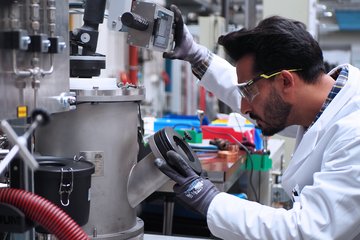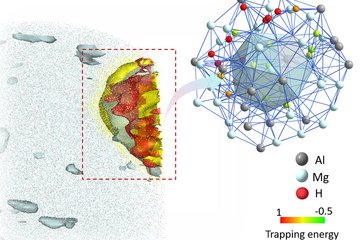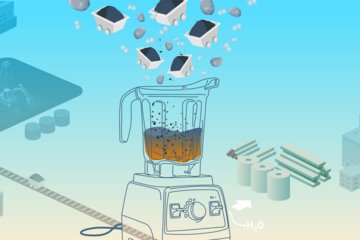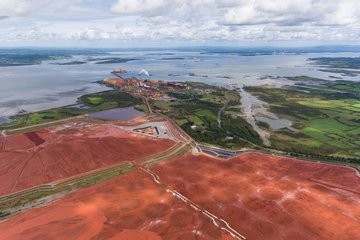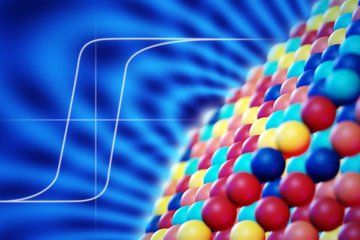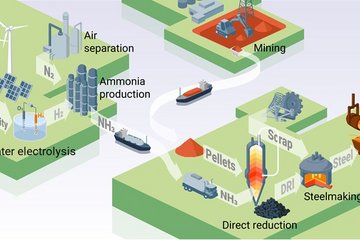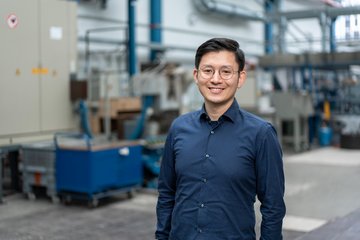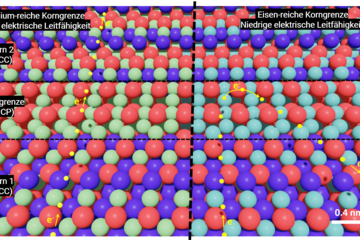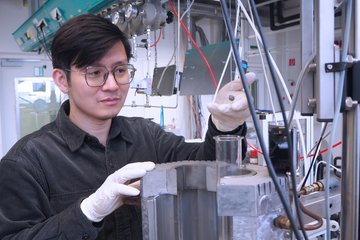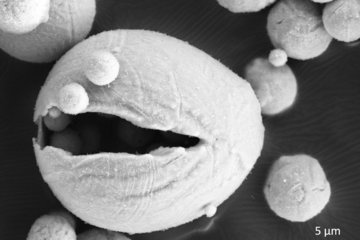Alle Typen
301.
Zeitschriftenartikel
Manipulation of matter by electric and magnetic fields: Toward novel synthesis and processing routes of inorganic materials. Materials Today 21 (5), S. 527 - 536 (2018)
302.
Zeitschriftenartikel
ω phase acts as a switch between dislocation channeling and joint twinning- and transformation-induced plasticity in a metastable β titanium alloy. Acta Materialia 151, S. 67 - 77 (2018)
303.
Zeitschriftenartikel
Synthesis and stabilization of a new phase regime in a Mo–Si–B based alloy by laser-based additive manufacturing. Acta Materialia 151, S. 31 - 40 (2018)
304.
Zeitschriftenartikel
On the detection of multiple events in atom probe tomography. Ultramicroscopy 189, S. 54 - 60 (2018)
305.
Zeitschriftenartikel
Boron doped ultrastrong and ductile high-entropy alloys. Acta Materialia 151, S. 366 - 376 (2018)
306.
Zeitschriftenartikel
Strain Rate Sensitivity of a TRIP-Assisted Dual-Phase High-Entropy Alloy. Frontiers in Materials Structural Materials 5 (30), S. 1 - 10 (2018)
307.
Zeitschriftenartikel
Characterizing solute hydrogen and hydrides in pure and alloyed titanium at the atomic scale. Acta Materialia 150, S. 273 - 280 (2018)
308.
Zeitschriftenartikel
Hydrogen embrittlement of an interstitial equimolar high-entropy alloy. Corrosion Science 136, S. 403 - 408 (2018)
309.
Zeitschriftenartikel
Development of high modulus steels based on the Fe – Cr – B system. Materials Science and Engineering A: Structural Materials Properties Microstructure and Processing 724, S. 142 - 147 (2018)
310.
Zeitschriftenartikel
Experimental–numerical study on strain and stress partitioning in bainitic steels with martensite–austenite constituents. International Journal of Plasticity 104, S. 39 - 53 (2018)
311.
Zeitschriftenartikel
Influence of compositional inhomogeneity on mechanical behavior of an interstitial dual-phase high-entropy alloy. Materials Chemistry and Physics 210, S. 29 - 36 (2018)
312.
Zeitschriftenartikel
Corrosion behavior of an equiatomic CoCrFeMnNi high-entropy alloy compared with 304 stainless steel in sulfuric acid solution. Corrosion Science 134, S. 131 - 139 (2018)
313.
Zeitschriftenartikel
Microstructural degradation of polycrystalline superalloys from oxidized carbides and implications on crack initiation. Scripta Materialia 147, S. 59 - 63 (2018)
314.
Zeitschriftenartikel
Competition between formation of carbides and reversed austenite during tempering of a medium-manganese steel studied by thermodynamic-kinetic simulations and atom probe tomography. Acta Materialia 147, S. 165 - 175 (2018)
315.
Zeitschriftenartikel
Atomic-scale insights into surface species of electrocatalysts in three dimensions. Nature Catalysis 1 (4), S. 300 - 305 (2018)
316.
Zeitschriftenartikel
In-situ SEM observation of phase transformation and twinning mechanisms in an interstitial high-entropy alloy. Acta Materialia 147, S. 236 - 246 (2018)
317.
Zeitschriftenartikel
Evolution of dislocation patterns inside the plastic zone introduced by fatigue in an aged aluminium alloy AA2024-T3. Materials Science and Engineering A: Structural Materials Properties Microstructure and Processing 718, S. 345 - 349 (2018)
318.
Zeitschriftenartikel
The effect of chromium and cobalt segregation at dislocations on nickel-based superalloys. Scripta Materialia 145, S. 76 - 80 (2018)
319.
Zeitschriftenartikel
Correlative transmission Kikuchi diffraction and atom probe tomography study of Cu(In,Ga)Se2 grain boundaries. Progress in Photovoltaics: Research and Applications 26 (3), S. 196 - 204 (2018)
320.
Zeitschriftenartikel
Finite-deformation phase-field chemomechanics for multiphase, multicomponent solids. Journal of the Mechanics and Physics of Solids 112, S. 619 - 636 (2018)
